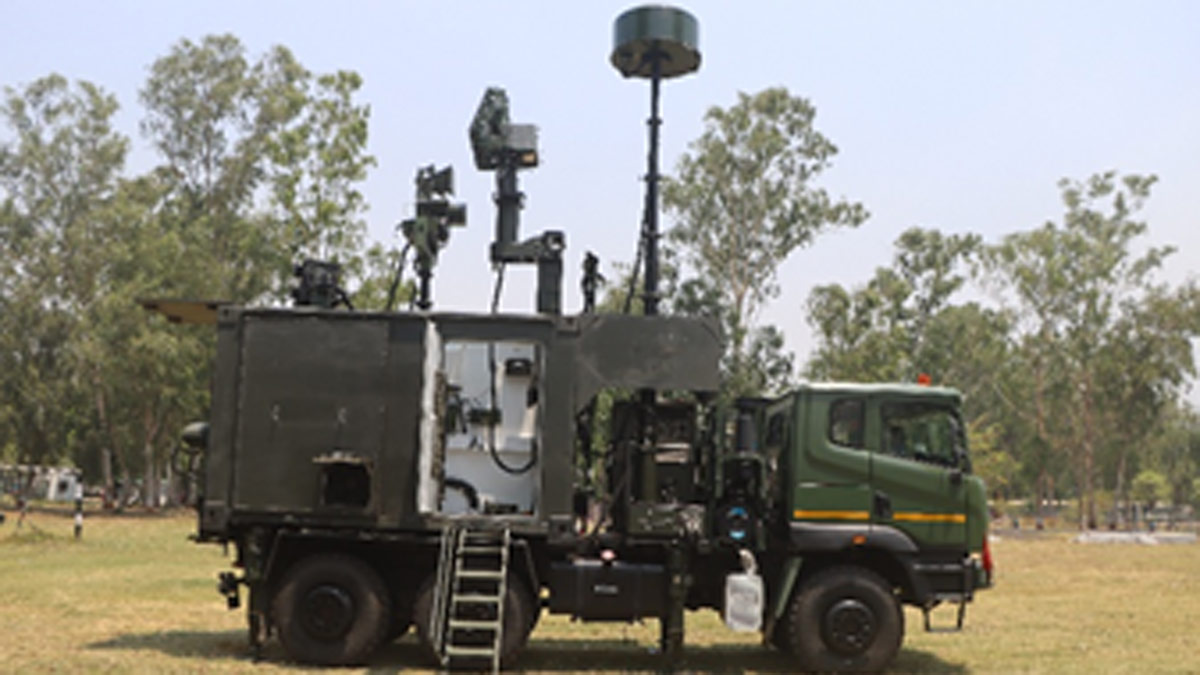- Courses
- GS Full Course 1 Year
- GS Full Course 2 Year
- GS Full Course 3 Year
- GS Full Course Till Selection
- Online Program
- GS Recorded Course
- NCERT (Recorded 500+ Hours)
- Polity Recorded Course
- Geography Recorded Course
- Economy Recorded Course
- AMAC Recorded Course
- Modern India, Post Independence & World History
- Environment Recoded Course
- Governance Recoded Course
- Science & Tech. Recoded Course
- International Relations and Internal Security Recorded Course
- Disaster Management Module Course
- Ethics Recoded Course
- Essay Recoded Course
- Current Affairs Recoded Course
- CSAT
- 5 LAYERED ARJUNA Mentorship
- Public Administration Optional
- ABOUT US
- OUR TOPPERS
- TEST SERIES
- FREE STUDY MATERIAL
- VIDEOS
- CONTACT US
How Land Degradation is Threatening Earth’s Capacity to Sustain Humanity
How Land Degradation is Threatening Earth’s Capacity to Sustain Humanity
03-12-2024
- A recent United Nations report warns that land degradation is seriously threatening the Earth's ability to support human life.
- If we don’t take urgent action to reverse this process, future generations will face enormous challenges.
- The report, titled "Stepping Back from the Precipice: Transforming Land Management to Stay Within Planetary Boundaries," reveals alarming facts about the extent of land degradation and its impact on both the environment and human health.
What is Land Degradation? Why is it a Concern?
-
Definition of Land Degradation:
- According to the UN Convention to Combat Desertification (UNCCD), land degradation refers to the decline in the productivity and health of land caused by human activities. It affects cropland, pastures, forests, and woodlands.
- The causes of land degradation include poor land management and unsustainable land use practices.
-
Why is Land Degradation a Matter of Concern?:
- Human and Ecosystem Impact: Land degradation harms both humans and ecosystems:
- It reduces the quality and quantity of food production, leading to malnutrition.
- It increases the spread of water-borne diseases due to poor hygiene and lack of clean water.
- It can also cause respiratory diseases from soil erosion.
- Water and Marine Systems: Land degradation affects water systems. For example, eroded soil carrying fertilizers and pesticides ends up in water bodies, harming marine life and affecting local communities that rely on these waters.
- Contribution to Climate Change: The world's soil is the largest land-based carbon sink. When land is degraded, it releases carbon dioxide and nitrous oxide into the atmosphere, worsening global warming. In the last decade, land degradation has reduced the ability of ecosystems to absorb carbon dioxide by 20%.
- Human and Ecosystem Impact: Land degradation harms both humans and ecosystems:
Causes of Land Degradation
-
Unsustainable Agricultural Practices:
- The overuse of chemical fertilizers, pesticides, and water diversion are the main causes of land degradation. These practices lead to:
- Deforestation.
- Soil erosion.
- Pollution.
- Unsustainable irrigation also depletes freshwater resources, and excessive use of nitrogen-based fertilizers destabilizes ecosystems.
- The overuse of chemical fertilizers, pesticides, and water diversion are the main causes of land degradation. These practices lead to:
- Climate Change:
- Climate change both causes and worsens land degradation. Rising temperatures and changing weather patterns lead to:
- More intense storms and heavy rainfall.
- Increased heat stress, which makes land more vulnerable to degradation.
- Climate change both causes and worsens land degradation. Rising temperatures and changing weather patterns lead to:
- Urbanization:
- The rapid growth of cities contributes to land degradation through:
- Habitat destruction.
- Pollution.
- Loss of biodiversity.
- The rapid growth of cities contributes to land degradation through:
Which Areas Are Most Affected?
-
Hotspots of Land Degradation:
- The worst-affected areas are often dry or semi-arid regions. Some of the most affected places include:
- South Asia.
- Northern China.
- High Plains and California (United States).
- The Mediterranean region.
- The worst-affected areas are often dry or semi-arid regions. Some of the most affected places include:
-
Drylands and Low-Income Countries:
- A third of the world's population lives in drylands, which make up about 75% of Africa.
- Low-income countries are hit hardest by land degradation. These countries, especially in tropical and arid regions, have less resilience to recover from the effects of land degradation, making it even harder for them to manage the crisis.
The Scale of the Problem
-
Global Scale of Land Degradation:
- One million square kilometers of land are degraded every year, an area larger than some countries.
- 15 million square kilometers of land have already been degraded, which is more than the size of Antarctica.
- Consequences of Inaction:
- If current trends continue, land degradation will severely limit the Earth's ability to sustain life, making it harder to produce food, access clean water, and maintain healthy ecosystems.
Conclusion
The new United Nations report paints a grim picture of the state of land degradation, warning that if we do not take immediate action, we risk losing the Earth’s capacity to support humanity. Unsustainable farming, climate change, and rapid urbanization are key drivers of this problem. Regions in dry and low-income areas are especially vulnerable, and millions of people are already feeling the impact. To protect the future, we must urgently change how we manage and use land to restore ecosystems, prevent further degradation, and ensure that the planet can continue to sustain future generations.




